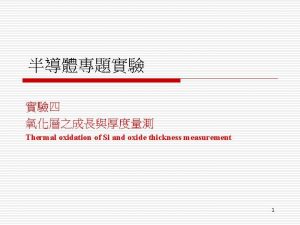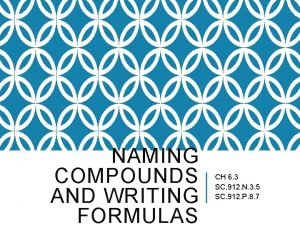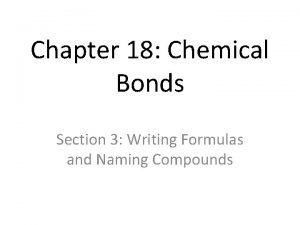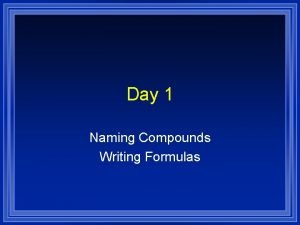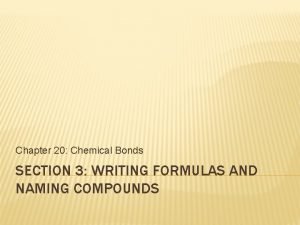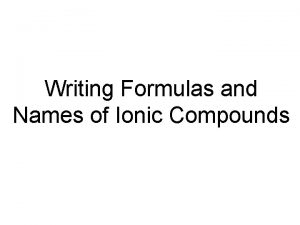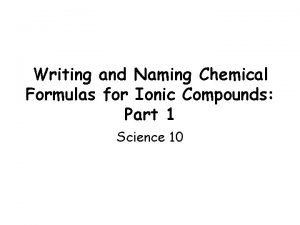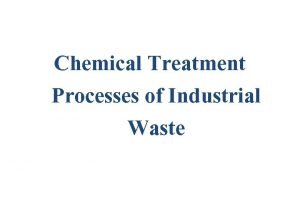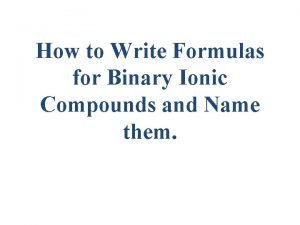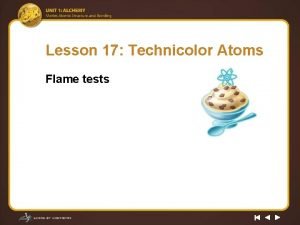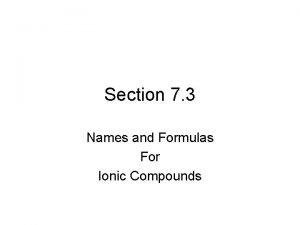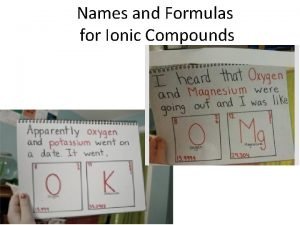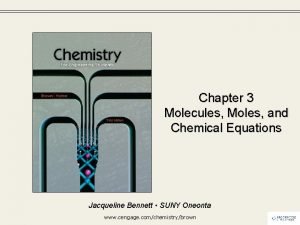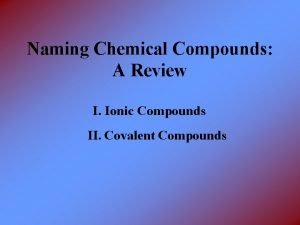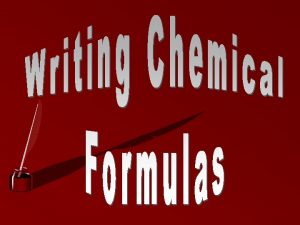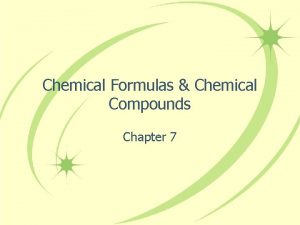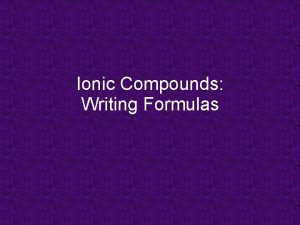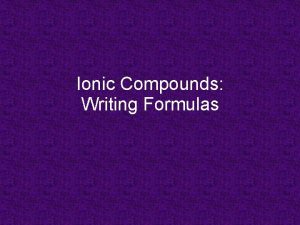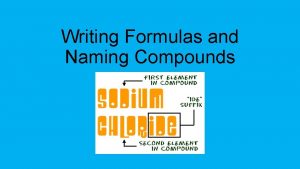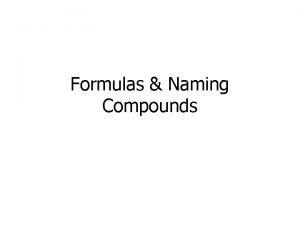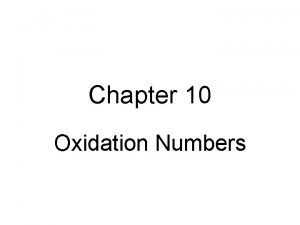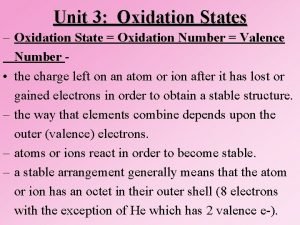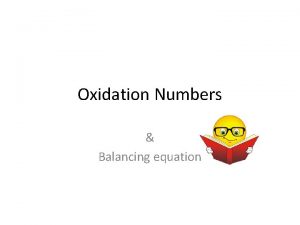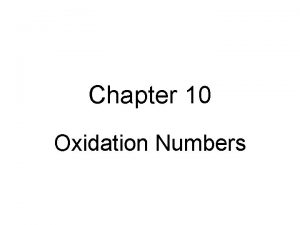Writing Chemical Formulas Chemical Formulas represent compounds Oxidation




















- Slides: 20

Writing Chemical Formulas

Chemical Formulas represent compounds.

Oxidation Numbers are used to determine the ratio in which elements combine to form compounds.

Understanding Chemical Formulas Chemical formulas are composed of a positive half and a negative half. Ex. - Water is a compound you know to have a formula of H 2 O.

What about Ions? • Cations Positively Charged Atoms Na + • Anions Negatively Charged Atoms Cl -

The element with the positive oxidation number is always written first. HO The element with the negative oxidation number is always written second.

The total of the oxidation numbers in a compound must equal zero. +1 HO -2 Hydrogen’s oxidation number is +1 and oxygen’s is -2. With one H and one O, the total is not 0, it is -1!!!

Subscripts, small numbers to the lower right of the chemical symbol, represent the number of atoms for each element present in the compound. The subscript of 1 is never written in a chemical formula. It is understood since the chemical symbol is there. Add subscripts after a chemical symbol, when needed, to make the oxidation numbers total zero. H 2 O

How to check if the formula is correct: Multiply subscript by oxidation number for the total oxidation number of each element in a formula. For Hydrogen: (oxidation number +1)(subscript 2) = +2 total For Oxygen: (oxidation number -2)(subscript 1) = -2 total The formula H 2 O is the correct formula!!!

There MUST be an easier way. . and there is!! The easiest way to think of writing chemical formulas is to use the oxidation number (without the + or -) of one element as the subscript of the other element. Ca Cl +2 -1

Cross over the oxidation numbers without the charges!!! +2 Ca Cl -1

Ca Cl 2 REMINDER: DO NOT write a subscript of 1. Reduce the subscripts if needed.





Writing Formulas for Ionic Compounds 1. Find oxidation number for each element. 2. Check if charges are equal to zero. 3. Use criss-cross method if charges are NOT equal to zero. 4. Write symbol and correct subscript.

Writing Covalent Formulas The prefixes tell you the subscript of each element within the formula • • • Mono - 1 Di - 2 Tri - 3 Tetra - 4 Penta - 5 • • • Hexa - 6 Hepta - 7 Octa - 8 Nona - 9 Deca - 10

Steps for Writing Covalent Formulas Write the symbol for both nonmetals. 2. Write the prefix for each element as a subscript. • If there is only one atom present for the 1 st element DO NOT use a subscript. • If there is more than one atom present then write it as a subscript. 1.

Write formulas for these • diphosphorus pentoxide • tetraiodide nonoxide • sulfur hexafluoride • nitrogen trioxide • Carbon tetrahydride • phosphorus trifluoride
 Chapter 7 chemical formulas and chemical compounds test
Chapter 7 chemical formulas and chemical compounds test Chapter 7 review modern chemistry answers
Chapter 7 review modern chemistry answers Ternary compound definition
Ternary compound definition Dry oxidation vs wet oxidation
Dry oxidation vs wet oxidation Naming hydrates
Naming hydrates Naming and writing formulas for molecular compounds
Naming and writing formulas for molecular compounds Section 3 writing formulas and naming compounds
Section 3 writing formulas and naming compounds Monoatomic ion
Monoatomic ion Naming compounds and writing formulas
Naming compounds and writing formulas Section 3 writing formulas and naming compounds
Section 3 writing formulas and naming compounds Nhmno4
Nhmno4 Covalent and ionic venn diagram
Covalent and ionic venn diagram Writing and naming chemical formulas
Writing and naming chemical formulas Writing formulas (criss-cross method)
Writing formulas (criss-cross method) Chemical oxidation water treatment
Chemical oxidation water treatment Binary compounds chemistry
Binary compounds chemistry Lesson 17 technicolor atoms flame test answers
Lesson 17 technicolor atoms flame test answers Section 3 names and formulas for ionic compounds
Section 3 names and formulas for ionic compounds Section 3 names and formulas for ionic compounds
Section 3 names and formulas for ionic compounds Larry made this picture to represent a chemical reaction
Larry made this picture to represent a chemical reaction Names of ionic compounds
Names of ionic compounds



